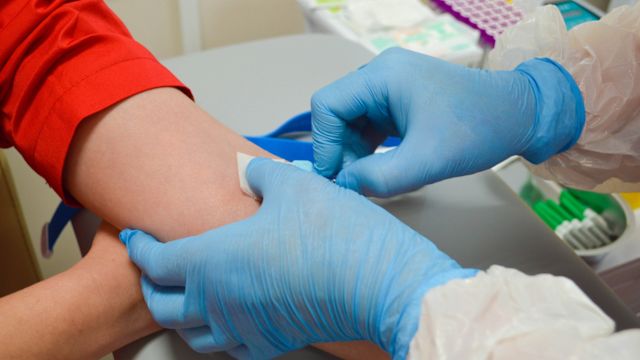Updated on September 30, 2024
Hereditary angioedema (HAE) is a genetic disorder that causes recurring episodes of edema, a type of swelling caused by fluid buildup in the body’s tissues. Here, we look at what is known and not known about the causes of HAE, with a look at what is happening in the body when a person has HAE.
HAE is caused by genetic mutations
Genes are sequences of DNA (deoxyribonucleic acid). In simplified terms, DNA can be thought of as long strands of instructions for how every part of the body is made and how every aspect of the body works. If DNA can be thought of as a very long instruction manual for the body, genes can be thought of as the chapters of that instruction manual, covering specific processes.
A genetic mutation occurs when there is a change to the DNA sequence inside a gene. This change causes the gene to function differently than it normally would. Inherited mutations are passed on from a biological parent that has the same mutation. Spontaneous mutations are new mutations that occur on their own as cells divide and replicate.
The genetic mutations that cause HAE can be inherited or spontaneous.
The mutations that cause HAE
The genetic mutations that cause HAE affect the body’s ability to produce a protein called C1 inhibitor. This protein plays an important role in the normal functioning of the body’s immune system. This includes the complement system and bradykinin system.
Complement system
The complement system is a group of about 60 different immune proteins that circulate in the blood and are also found on the surface of some cells. The complement system helps with several key functions of the immune system. It helps the body fight infections, helps remove foreign substances, and helps remove dead cells.
Bradykinin
Bradykinin is a substance produced by the immune system that promotes inflammation. It works by increasing blood flow and the permeability of blood vessels (the ability of blood vessels to release fluid and immune cells into surrounding tissues). When an area of the body is injured or has an infection, increased blood flow and permeability help immune cells reach the damaged or infected tissues.
Bradykinin also activates nerve endings and causes pain. Pain is another protective mechanism. It’s a signal that something is wrong and that an area of the body needs to be protected. For example, the pain caused by a sprained ankle prevents a person from walking on that ankle and causing further damage.
C1 inhibitor and HAE episodes
C1 inhibitor slows down these processes, ensuring that the immune system does what it needs to do—but does not do too much. When a person has HAE, there is not enough C1 inhibitor or there is abnormal C1 inhibitor that does not function correctly. As a result, there are high levels of bradykinin as well as other abnormalities in how the immune system functions. This causes edema.
HAE episodes can affect many different parts of the body, including the hands, arms, legs, face, tongue, buttocks, and genitals. Episodes can also cause edema in the intestines, causing abdominal pain and GI symptoms. Edema in the throat can block the airways, making it difficult for a person to breathe—an event that can be life threatening.
While there is no known cure for HAE, this condition can be managed. Management typically involves avoiding triggers and taking medications. Medications include acute therapies to take when an episode occurs, as well as prophylactic therapies that prevent attacks. Some people will take prophylactic therapies on a continuous basis. Other people may only take prophylactic therapies leading up to a circumstance that is likely to trigger an episode, such as dental work, medical procedures, or periods of high stress.






